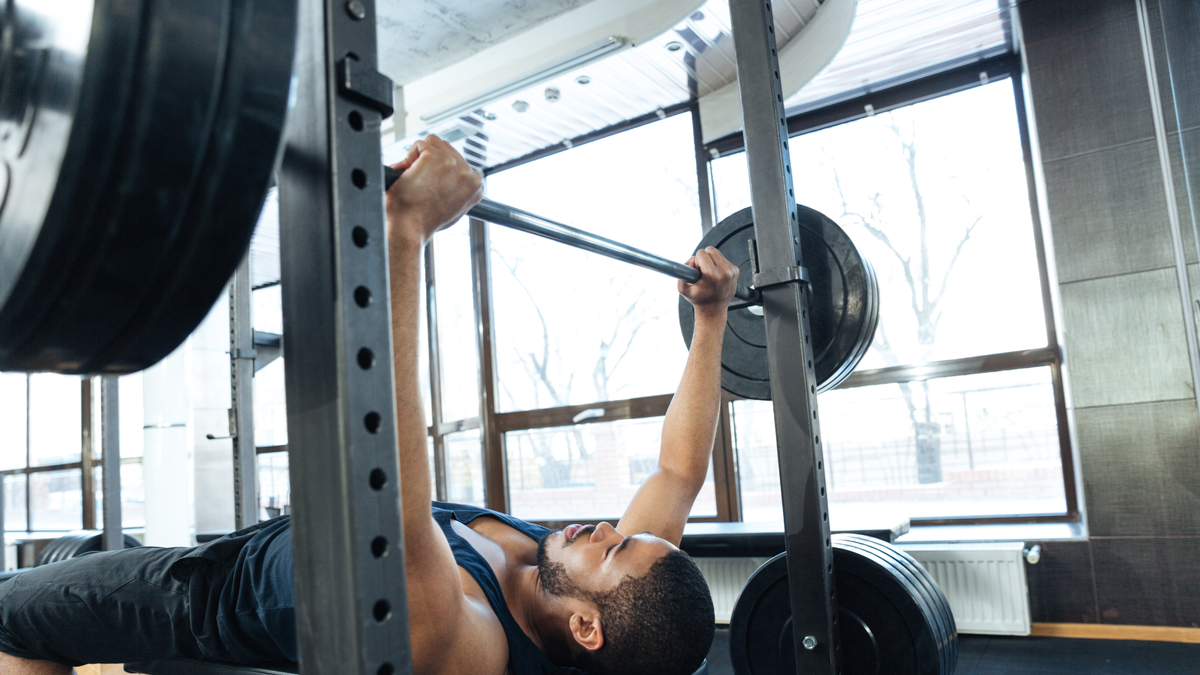Products You May Like
Weights, by their very definition, are heavy. That would explain why lifting weights is a good way to get stronger. Pick up a weight. If it’s easy, pick up more. If it’s too hard, try until it’s easy…then pick up more.
While many lifters train to improve their physique, working to enhance sheer strength will always appeal to a fundamental instinct. Like muscle-building workouts, the right strength-building program requires a specialized plan to achieve maximum results and move hefty weight. Here’s what you need to know.
How to Build Strength
How the Body Builds Strength
While the terms are sometimes used interchangeably, “strength training” and “muscle building” are interpreted differently by the body. Muscle building is relatively straightforward: A target muscle is put under stress, which triggers muscle protein synthesis, and new muscle tissue is created, making that muscle grow in size.
Strength training is slightly more complex. Strength can be built in several ways. The first is physical, practicing the skill of performing a specific exercise and building the muscles that function during that exercise. The second response to strength-building is neurological — the central nervous system (CNS) essentially “learns” which muscle fibers need to be recruited to move a specific load in a particular exercise. (1)(2)
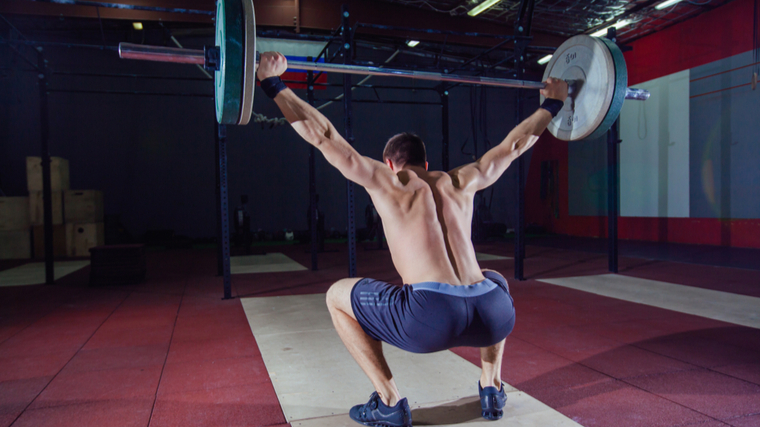
The CNS is composed of the brain and spinal cord and is responsible for activating, well, everything else in the body. The CNS determines which muscles and muscle fibers need to be recruited to perform any physical activity, whether it’s lifting a 600-pound barbell or picking up a newspaper from the front porch.
Similar to a muscle, the CNS can perform better in response to certain training but it can also be overstressed, resulting in delayed results and potentially counter-productive workouts.
To develop maximum strength, you need to develop your muscles as well as allow your CNS to become more familiar with the movement. Neglecting one or the other will not allow you to lift the heaviest weights possible. Your training program not only needs to address the muscles moving the weight but also the brain that’s telling which muscles what to do.
This is why building strength requires a combination of the proper training volume (sets and reps), training intensity, and exercise choice.
How to Train to Build Strength
The training program of a lifter focused on getting as strong as possible can, and should, be very different from a lifter who wants to build as much muscle as possible. Everything from exercise choice to how many reps are performed to how much weight they lift will determine their results.
Here are the details of setting up a workout routine specifically designed to build strength and allow recovery for optimal results.
Establish a Training Split
The first step to building strength is establishing a plan, and that plan usually starts with knowing what you’re training and on what days (known as a training split). There are a lot of ways to divvy up your training, but not all of them are efficient for gaining strength. For example, a body part split — wherein you train one or two body parts per workout — is a popular choice for bodybuilders or anyone looking to get larger. You can accumulate more muscle-building tension on a specific muscle with body part splits, but by hyper-focusing on isolation movements and a couple of muscles, you leave strength gains on the table.
A popular strength-training approach is to break up your training based on specific movements. If you’re a competitive powerlifters, those movements should be a back squat, bench press, and deadlift — since those are the lifts you’ll perform at a powerlifting meet. If you’re not a competitive powerlifter, you’ll still most likely benefit the most from prioritizing a primary pushing, pulling, and squat movement.
Planning your training days around a specific lift tends to give way to what’s known as a push, pull, legs split, which is exactly what it sounds like. On the days you train the bench press (or another similar compound exercise), you’ll also perform pushing movements like overhead presses, skull crushers, push-ups, and dips. A pull day may start with the deadlift and then end with movements such as pull-ups, cable rows, and back extensions. And for legs, you’ll prioritize squats and then isolate different parts of you lower body with more specific exercises like hamstring curls, leg extensions, and calf raises.
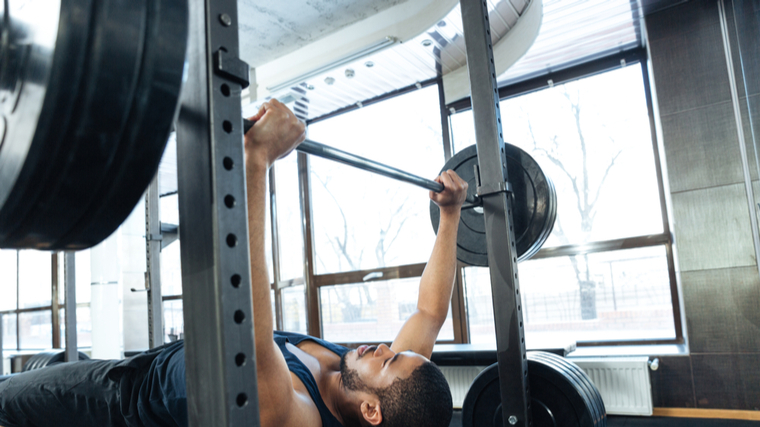
Some lifters like to double-up their push, pull, legs split so they hit each category twice per week. Typically, a lifter will dedicate one push, pull, legs cycle to high-intensity, low-volume training for strength and then focus on high-volume, low-intensity work for the second round of push, pull, legs to develop muscle mass. If you’re a new lifter looking to get strong, it’s suggested to train only three times per week. Six days of training is a lot, and if you’re not used to it you risk overtraining, which can lead to lackluster results or, at worst, injury.
A close alternative to the classic push, pull, legs split is to focus on specific movement patterns — horizontal and vertical pushing and pulling, hip hinging, and squatting. Following this split, you’d have four training days (see below) that are primarily built around strength-building compound movements. Your main movements for horizontal and vertical push and pull days may be the bench press, Pendlay row, overhead press, and weighted pull-up. Then, you’d deadlift on hip hinge days and squat on squat (or nee-based) days.
Another key consideration for organizing your workout split is rest and recovery. Intense workouts can require up to 72 hours of recovery time between repeated sessions to avoid a negative effect on performance. (3) So, training an exercise any more than once every three days (meaning no more than twice per week) would compromise strength and power output, resulting in less efficient training.
You won’t run into this issue following a push, pull, leg split. Though, if you opt for a different approach, workout structure concerning recovery should be top of mind.
The Best Exercises to Build Strength
If your car was stuck in a ditch, would you instead try pushing it out yourself, or would you want a team of five people helping you? The same basic premise applies to exercises. If you have a 300-pound barbell, would you instead try to lift it with only your biceps or with your biceps, triceps, shoulders, lats, upper back, glutes, and hamstrings?
Multi-joint (compound) exercises activate numerous muscle groups during an exercise, each of which contributes to strength output. In comparison, single-joint (isolation) exercises are more beneficial as accessory or “assistance” training to strengthen weak points and support larger movements. For example, the triceps during a bench press or the hamstrings during a deadlift.
The exact exercises to focus on are essentially up to the individual lifter. Other than competitive strength athletes who perform specific exercise in competitions, very few people in the gym “must” do any specific exercise.

Despite what gym lore says, not every lifter in the gym is required to do the “big three” powerlifts — barbell flat bench press, barbell back squat, and conventional deadlift. Those exercises can certainly be effective for building strength, but so can the overhead press, front squat, and trap bar deadlift, for example.
The priority is to choose multi-joint exercises to recruit the most total muscle to move a heavier weight while allowing for consistent load progression. Choosing exercises which don’t accommodate increased weight from week to week won’t allow the type of progression needed for long-term results.
For example, isolation exercises like leg extensions, lateral raises, or barbell curls aren’t well-suited to adding five to 10 pounds (or more) each and every week because maintaining safe and effective technique becomes nearly impossible at a certain point. Sacrificing exercise form to move heavy weights isn’t a reasonable plan for getting long-term results.
Compound Lift Examples
- Deadlifts (barbell, trap-bar, kettlebell, dumbbell)
- Bench Press
- Back Squat
- Front Squat
- Dumbbell Bench Press
- Romanian Deadlift
- Barbell Row
- Overhead Press
Isolation Lift Examples
- Lateral Raise
- Dumbbell Curl
- Leg Extension
- Hamstring Curl
- Cable Pushdown
- Skull Crusher
- Calf Raise
- Cable Flye
Choosing Sets, Reps, and Intensity for More Strength
A popular saying from weightlifters in the early-1900s was “train for strength and size will follow.” Meaning, a focus on building strength will incidentally lead to muscle growth without requiring specific hypertrophy (muscle building) training.
Many lifters, especially beginners, will build a combination of size and strength from most weight training programs. However, to reach one single goal, a training plan needs to be tailored towards one specific target. (4)
A workout designed to build strength requires a very different approach from a workout designed to build muscle size. While muscle-building workouts require a certain amount of total volume (sets and reps) to stimulate growth, building strength requires performing fewer reps per set, resulting in lower overall volume.
Strength is most effectively built when performing three to five sets of one to six reps with an appropriately challenging load. (5) (6) “Appropriately challenging” are the keywords there.
For muscle-building, reaching muscular failure in a set is often required. For strength-building, muscular failure is counterproductive. This is a serious mind-shift lifters need to adopt in order to get stronger.
Training between 75% and 90% of your one-rep max (1RM) has been shown to develop maximal strength given the required volume. (7)
Lifting a given weight while avoiding muscular failure is necessary to achieve the required CNS stimulation and muscle fiber recruitment, and avoid negative training effects. Basketball players might never end practice on a missed shot, but strength-focused lifters should never miss a lift in the first place.

Achieving muscular failure and not being able to successfully complete a repetition can trigger an unwanted response, essentially telling your body to not “want” to lift the weight, making progress more and more difficult. (8)
Ensure You’re Progressing Each Week
Some parts of weight training can be complicated. Fortunately, some parts can also be easy. When training to build strength, progression really can be as simple as “add more weight to the bar each week.”
Adding either a predetermined weight (often five to 10 pounds, regardless of the exercise or lifter’s experience) or a specific percentage (typically two to 10%, with lower percentages being more appropriate for experienced lifters) can both be effective weekly approaches.
The key consideration is to maintain a training intensity below muscular failure. Adding reps each week is suboptimal for strength gains because it increases the total training volume at a relatively lower intensity and shifts the priority towards building muscle.
For example, on Monday you performed barbell rows with 205 pounds for three sets of five. Next Monday, use 215 pounds and again aim for the same three sets of five. If you feel extreme muscular fatigue and grind to complete rep four, avoid muscular failure by not attempting a fifth rep.
One overlooked but highly effective progression method, however, is to perform the same weight with the same reps to reinforce or improve exercise technique.
This is sometimes referred to as “owning the weight,” being able to perform the same volume with the same load using better form. With this approach, adding weight every other week, or even every three weeks, is best.
This would be achieved, for example, by performing barbell rows with 205 pounds for three sets of five. The following week, again use 205 pounds again for three sets of five while focusing on applying more bar speed, maintaining strict form, and not allowing any technique errors. In the next workout, use 215 pounds for three sets of five, and repeat.
This method can be particularly effective for competitive lifters or any lifter who’d benefit from improved technique, as well as lifters managing joint pain for whom weekly weight increases may be too much.
How to Eat for Strength
Training for strength has an unfortunate reputation for minimizing the importance of nutrition. If you’re not trying to build muscle or lose fat, then you can eat anything, right? No. Very wrong.
Not only will an inattention to diet affect recovery, but it’s too often associated with fat gain. While some lifters may not be concerned with adding body fat, there are fundamental health issues connected to excessive fat gain worth caring about, ranging from arthritis and cardiovascular issues to cancer and diabetes. (9)
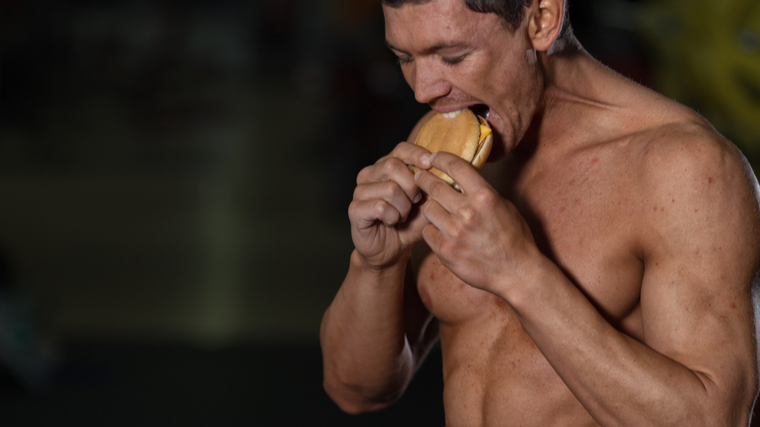
Nutrition plays an important role not only for recovery, but for performance. Here’s how to complement strength-building workouts with a diet plan that supports heavy lifting.
Plenty of Calories, But Not Too Many
A caloric deficit may be beneficial for fat loss goals, but to build strength, sufficient total calories are required to fuel performance and optimize recovery. Anywhere from 15 to 20 calories per pound of bodyweight per day (from a combination of protein, carbohydrates, and fats) is an effective starting point, dependent on the lifter’s size and overall weekly training plan. (10)(11)
While total calorie intake is one factor, overemphasizing “more calories” at the expense of strategic macronutrients is a mistake which can interrupt maximum results. Here’s how to setup the details of a performance-focused, strength-building diet plan.
Protein for Muscle Growth… and Recovery
Protein is most commonly associated with muscle growth. However, protein intake is essential for muscle recovery, as well.
Daily intake as high as 0.9 grams per pound of bodyweight have shown to be beneficial for supporting maximal strength. (12)(13) Rounding up to the more simplified “one gram of protein per pound of bodyweight” is a more well-known, more convenient, and equally effective guideline.
A higher protein intake also serves a secondary benefit of adding total daily calories without contributing significantly to fat gain. (14) So if you want to take in plenty of calories while still having some regard to limiting body fat, pack in the protein.
Carbohydrates for Fuel
Carbs are typically considered the preferred fuel source for athletic performance. This is because, essentially, muscle contractions, whether it’s sprinting around a track or throwing a ball or picking up a heavy barbell, are fueled by carbohydrates.
Two to three grams of carbs per pound of bodyweight per day is an effective guideline to fuel high-intensity training. (15) For better performance, consistent energy, and improved recovery while avoiding excessive calories, nutrient-dense sources such as grains, fruits, and root vegetables are preferred to highly processed, nutrient-void options. (16)
Some top-tier athletes are able to get away with less-than-strict nutrition practices. This is more a testament to their genetic eliteness and super-high workload (sometimes 30+ hours of exercise per week) than it is a template to follow.
Don’t Avoid Fats
Dietary fats are where many nutrition plans take a turn for the worse, either limiting them strictly or allowing an excess. Either extreme can create problems ranging from hormonal disruption to simple (and quick) fat gain.
Fat intake has been shown to support optimal sports performance when kept to roughly 30% of total daily calories, rather than a grams-per-pound guideline used with protein and carbohydrates. (17) For example, if you’re a 180-pound lifter eating 3,600 calories per day, fat intake should be roughly 120 grams (1080 calories) per day.
How to Recover to Build Strength
Lifting heavy weights without recovering is like driving cross-country without stopping for gas. You’re not going to make it very far. Here are two of the most important factors in recovery to ensure that your work outside the gym encourages results from the training done inside the gym.
Rest Days Are Necessary
When it comes to heavy lifting, rest days are often welcomed even by the most enthusiastic and dedicated lifters. Moving heavy weights can take its toll not only on the muscles of the body, but also on the CNS. (18)
Incorporating non-training days can allow full recovery and adaptation, which coincides with maximal performance during workouts. One way to potentially improve recovery without complete rest is known as “active recovery”. (19)

By using lower intensity training such as cardiovascular exercise, stretching, or lower intensity weight training (such as technique practice with lighter weights), overall recovery may be improved compared to total rest, making it an ideal approach for lifters who need to “get up and do something” every day.
Plenty of Sleep Every Night
Like a day of rest, a good night’s sleep is something many lifters look forward to after a hard workout. Pushing your body hard during the day makes resting at night even more important.
Hopefully, getting seven to nine hours per night is achievable for your schedule. That range has been shown to be ideal for ensuring adequate recovery and optimal athletic performance. (20) Getting enough sleep can be just as important as getting into the gym to train when it comes to reaching big goals.
Sample Strength-Building Program
Building strength doesn’t need to be complicated, but it does need to follow the programming principles you’ve just learned. Here’s one example of a workout plan focused on moving big weights, recovering well, and then moving even bigger weights.
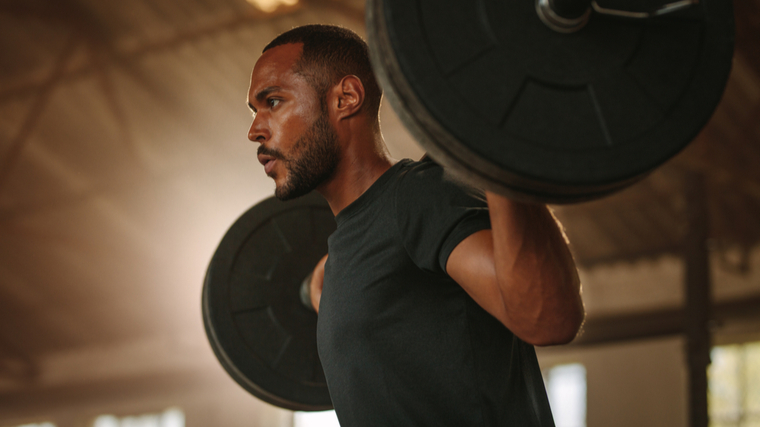
Sunday
Cardiovascular exercise (walk, run, or bike), 30 minutes.
Monday
Hip Hinge Workout
- Deadlift: 5 x 3
- Seated Leg Curl: 4 x 8-10
- Single-Leg Romanian Deadlift: 3 x 6-8
Tuesday
Vertical Push & Pull Workout
- Push Press: 5 x 3
- Chin-Up: 5 x 5
- Lateral Raise: 4 x 10-12
- Single-Arm Pulldown: 3 x 10-12
Wednesday
Stretching or mobility training, 30 minutes
Thursday
Squat Workout
- Front Squat: 5 x 3
- Reverse Lunge: 3 x 10-12
- Standing Calf Raise: 4 x 12-15
Friday
Horizontal Push & Pull Workout
- Bench Press: 5 x 3
- Barbell Row: 5 x 5
- Dip: 4 x 8-10
- Bent-Over Dumbbell Flye: 4 x 10-12
Saturday
Cardiovascular exercise (walk, run, or bike), 30 minutes.
Test Your Strength
What good is building strength if you don’t know how strong you’re getting? Testing your 1RM can tread the fine line between assessing your progress and feeding your ego.
However, as long as you approach a 1RM test as a deliberate section of your overall training plan and not a spur-of-the-moment whim, it can be an essential part of your progress. Testing one to three times per year, with several months of uninterrupted training leading up to each test, will give plenty of insight as to how your training is progressing.
The most effective approach is to take several days throughout one week to test your primary lifts, ideally focusing on just one lift per day to minimize cumulative fatigue.
Go through a general warm-up and then commence the test, performing six to eight progressively heavier sets of one rep. Be sure to extend rest periods as weights get significantly heavier, resting up to five minutes between each set. (21)
As with standard training, be sure to avoid muscular failure. The nature of the test itself may mean you do eventually reach failure (be sure to have a spotter on call), but do your best to gauge performance and anticipate your capabilities.
Time to Get Stronger
Training for strength is one of the most fundamental goals in the gym. Even lifters who prioritize muscle-building can benefit from time spent focused on improving their strength. If you’re not interested in fine-tuning your physique and want to be lifting all the plates in the gym, set up a plan and go for it.
References
- Sale DG. Neural adaptation to resistance training. Med Sci Sports Exerc. 1988 Oct;20(5 Suppl):S135-45. doi: 10.1249/00005768-198810001-00009. PMID: 3057313.
- Jenkins NDM, Miramonti AA, Hill EC, Smith CM, Cochrane-Snyman KC, Housh TJ, Cramer JT. Greater Neural Adaptations following High- vs. Low-Load Resistance Training. Front Physiol. 2017 May 29;8:331. doi: 10.3389/fphys.2017.00331. PMID: 28611677; PMCID: PMC5447067.
- Thomas K, Brownstein CG, Dent J, Parker P, Goodall S, Howatson G. Neuromuscular Fatigue and Recovery after Heavy Resistance, Jump, and Sprint Training. Med Sci Sports Exerc. 2018 Dec;50(12):2526-2535. doi: 10.1249/MSS.0000000000001733. PMID: 30067591.
- Reggiani C, Schiaffino S. Muscle hypertrophy and muscle strength: dependent or independent variables? A provocative review. Eur J Transl Myol. 2020;30(3):9311. Published 2020 Sep 9. doi:10.4081/ejtm.2020.9311
- American College of Sports Medicine (2009). American College of Sports Medicine position stand. Progression models in resistance training for healthy adults. Medicine and science in sports and exercise, 41(3), 687–708. https://doi.org/10.1249/MSS.0b013e3181915670
- Campos, G. E., Luecke, T. J., Wendeln, H. K., Toma, K., Hagerman, F. C., Murray, T. F., Ragg, K. E., Ratamess, N. A., Kraemer, W. J., & Staron, R. S. (2002). Muscular adaptations in response to three different resistance-training regimens: specificity of repetition maximum training zones. European journal of applied physiology, 88(1-2), 50–60. https://doi.org/10.1007/s00421-002-0681-6
- Thompson, S.W., Rogerson, D., Ruddock, A. et al. The Effectiveness of Two Methods of Prescribing Load on Maximal Strength Development: A Systematic Review. Sports Med 50, 919–938 (2020). https://doi.org/10.1007/s40279-019-01241-3
- Gabriel DA, Kamen G, Frost G. Neural adaptations to resistive exercise: mechanisms and recommendations for training practices. Sports Med. 2006;36(2):133-49. doi: 10.2165/00007256-200636020-00004. PMID: 16464122.
- Pi-Sunyer X. The medical risks of obesity. Postgrad Med. 2009;121(6):21-33. doi:10.3810/pgm.2009.11.2074
- Kerksick, C.M., Wilborn, C.D., Roberts, M.D. et al. ISSN exercise & sports nutrition review update: research & recommendations. J Int Soc Sports Nutr 15, 38 (2018). https://doi.org/10.1186/s12970-018-0242-y
- Gary Slater & Stuart M. Phillips (2011) Nutrition guidelines for strength sports: Sprinting, weightlifting, throwing events, and bodybuilding, Journal of Sports Sciences, 29:sup1, S67-S77, DOI: 10.1080/02640414.2011.574722
- Schoenfeld, B.J., Aragon, A.A. & Krieger, J.W. The effect of protein timing on muscle strength and hypertrophy: a meta-analysis. J Int Soc Sports Nutr 10, 53 (2013). https://doi.org/10.1186/1550-2783-10-53
- Jäger, R., Kerksick, C.M., Campbell, B.I. et al. International Society of Sports Nutrition Position Stand: protein and exercise. J Int Soc Sports Nutr 14, 20 (2017). https://doi.org/10.1186/s12970-017-0177-8
- Bray, George A et al. “Effect of dietary protein content on weight gain, energy expenditure, and body composition during overeating: a randomized controlled trial.” JAMA vol. 307,1 (2012): 47-55. doi:10.1001/jama.2011.1918
- Kanter M. High-Quality Carbohydrates and Physical Performance: Expert Panel Report. Nutr Today. 2018;53(1):35-39. doi:10.1097/NT.0000000000000238
- Eck KM, Byrd-Bredbenner C. Food Choice Decisions of Collegiate Division I Athletes: A Qualitative Exploratory Study. Nutrients. 2021;13(7):2322. Published 2021 Jul 6. doi:10.3390/nu13072322
- Lowery LM. Dietary fat and sports nutrition: a primer. J Sports Sci Med. 2004;3(3):106-117. Published 2004 Sep 1.
- Zając A, Chalimoniuk M, Maszczyk A, Gołaś A, Lngfort J. Central and Peripheral Fatigue During Resistance Exercise – A Critical Review. J Hum Kinet. 2015;49:159-169. Published 2015 Dec 30. doi:10.1515/hukin-2015-0118
- Ortiz, R. O., Jr, Sinclair Elder, A. J., Elder, C. L., & Dawes, J. J. (2019). A Systematic Review on the Effectiveness of Active Recovery Interventions on Athletic Performance of Professional-, Collegiate-, and Competitive-Level Adult Athletes. Journal of strength and conditioning research, 33(8), 2275–2287. https://doi.org/10.1519/JSC.0000000000002589
- Ortiz RO Jr, Sinclair Elder AJ, Elder CL, Dawes JJ. A Systematic Review on the Effectiveness of Active Recovery Interventions on Athletic Performance of Professional-, Collegiate-, and Competitive-Level Adult Athletes. J Strength Cond Res. 2019 Aug;33(8):2275-2287. doi: 10.1519/JSC.0000000000002589. PMID: 29742750.
- Grgic, J., Lazinica, B., Schoenfeld, B.J. et al. Test–Retest Reliability of the One-Repetition Maximum (1RM) Strength Assessment: a Systematic Review. Sports Med – Open 6, 31 (2020). https://doi.org/10.1186/s40798-020-00260-z
Featured Image: Dean Drobot / Shutterstock
